|
Jane Jin Kaisen, Community of Parting, 2019
Double-channel video installation, dimensions variable
Community of Parting traces a different approach to borders, translation, and artistic expression by invoking the ancient Korean shamanic myth of the abandoned princess Bari and employing female Korean shamanism as an ethics and aesthetics of memory and mutual recognition across time and space.
Rooted in oral storytelling and embodied by female shamans, the legend of Bari and her abandonment at birth for being a girl is mainly understood as a story of filial piety. However, Kaisen frames the myth as a founding story of gender transgression that transcends the logic of division, but has the experience of othering and loss at its core. According to the myth, Bari regains the community’s acceptance after reviving the dead and is offered half the kingdom as a reward. Yet, the heroine refuses to abide by human borders and instead chooses to become the goddess who mediates at the threshold of the living and the dead. This is what distinguishes the myth of the abandoned Bari from other Korean myths about women. Community of Parting draws on Kaisen’s extensive research since 2011 into Korean shamanism and her long-term engagement with communities affected by war and division. The piece features imagery filmed in various locations including Jeju Island, the DMZ, South Korea, North Korea, Kazakhstan, Japan, China, the United States, and Germany. Combining shamanic ritual performance, nature and cityscapes, archival material, aerial imagery, poetry, voiceover, and soundscapes, the work is configured as a multi-scalar, nonlinear, and layered montage loosely framed around Bari’s multiple deaths. Both intersubjective and deeply personal in her approach, Kaisen treats the myth of the abandoned as a gendered tale of migration, marginalization, and resilience told from a multi-vocal site. In the shamanic ritual, the shaman abandons herself in order to mediate, gathering an assembly of the living, the dead, and multiple spirit witnesses. In a similar vein, a “community of parting” is formed in the piece around the shared sentiments of the abandoned. Ritual performance and chants by shaman Koh Soon Ahn, a survivor of the 1948 Jeju Uprising and Massacre in South Korea, constitutes a recurring rhythm and culminates in a ritual for the dead that involves the artist and her own personal abandonment. The myth is also reflected in the poetry of Swedish poet Mara Lee and in the poetics of Kim Hyesoon from whose book Woman, I Do Poetry the translated title Community of Parting derives. It further resonates in various narratives by South Korean, North Korean, and diasporic women who negotiate how gender bias along with colonialism, modernity, and war have resulted in radical ruptures while unfinished histories continue to linger. Infused by the living, the dead, and those yet to come, Community of Parting is actualized through a process of dissolution, revival, and becoming. Informed by shamanic practice, properties integral to the filmic medium are employed to contest and diffuse spatiotemporal boundaries and hierarchies of knowledge and being. In doing so, Community of Parting proposes other ways of thinking and being with others, including our relationship to nature and other life-forms. |
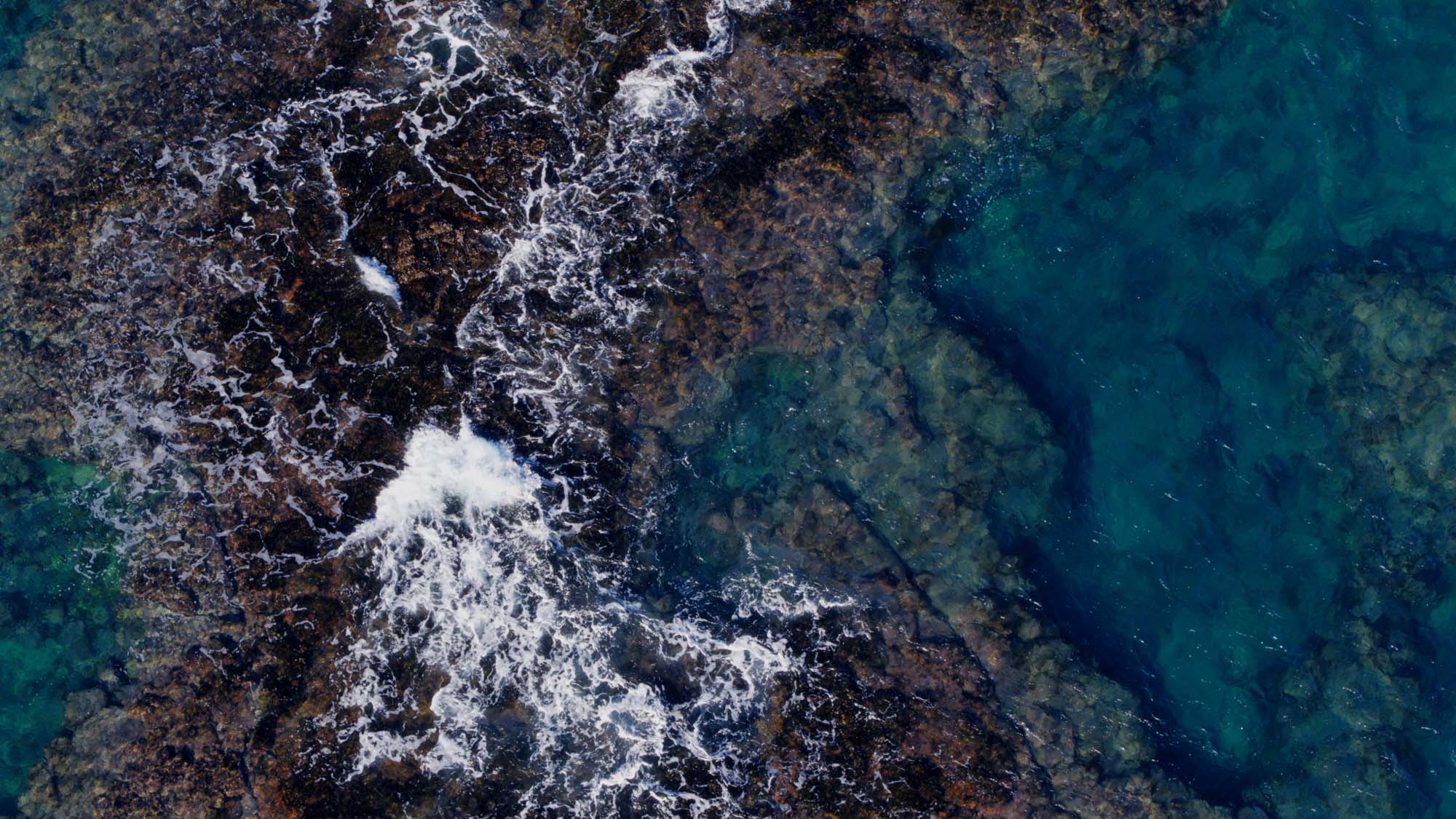 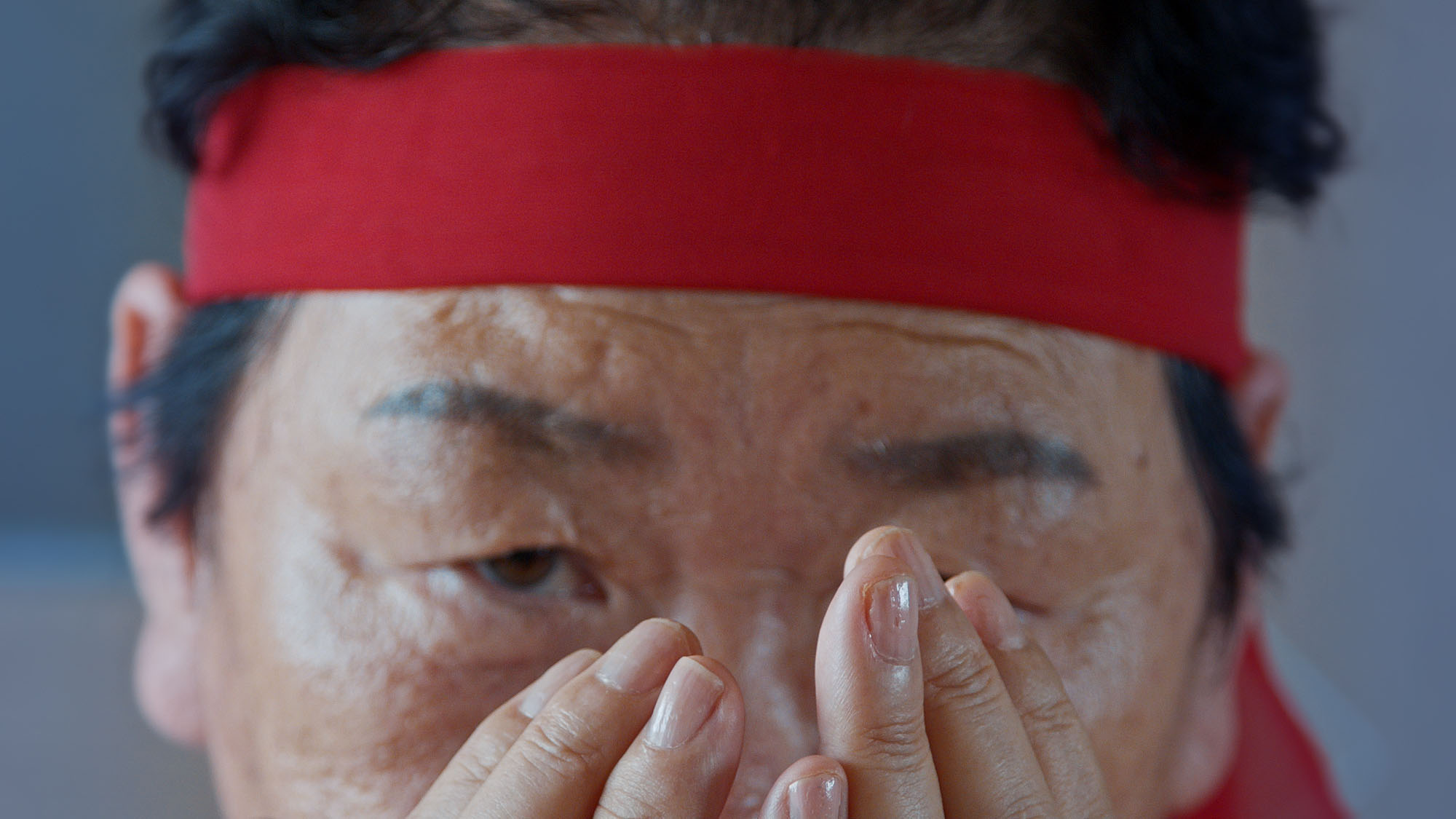 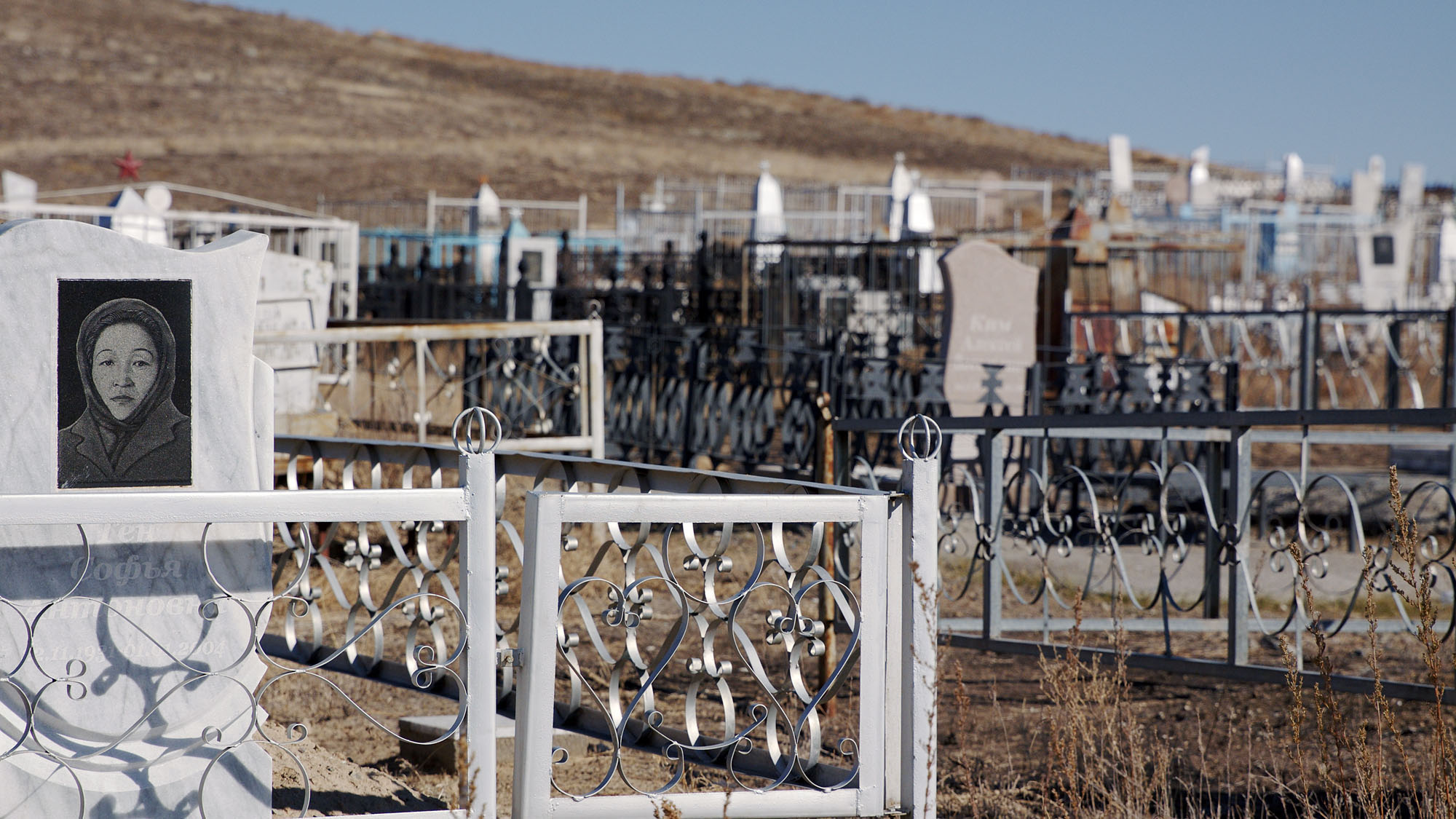 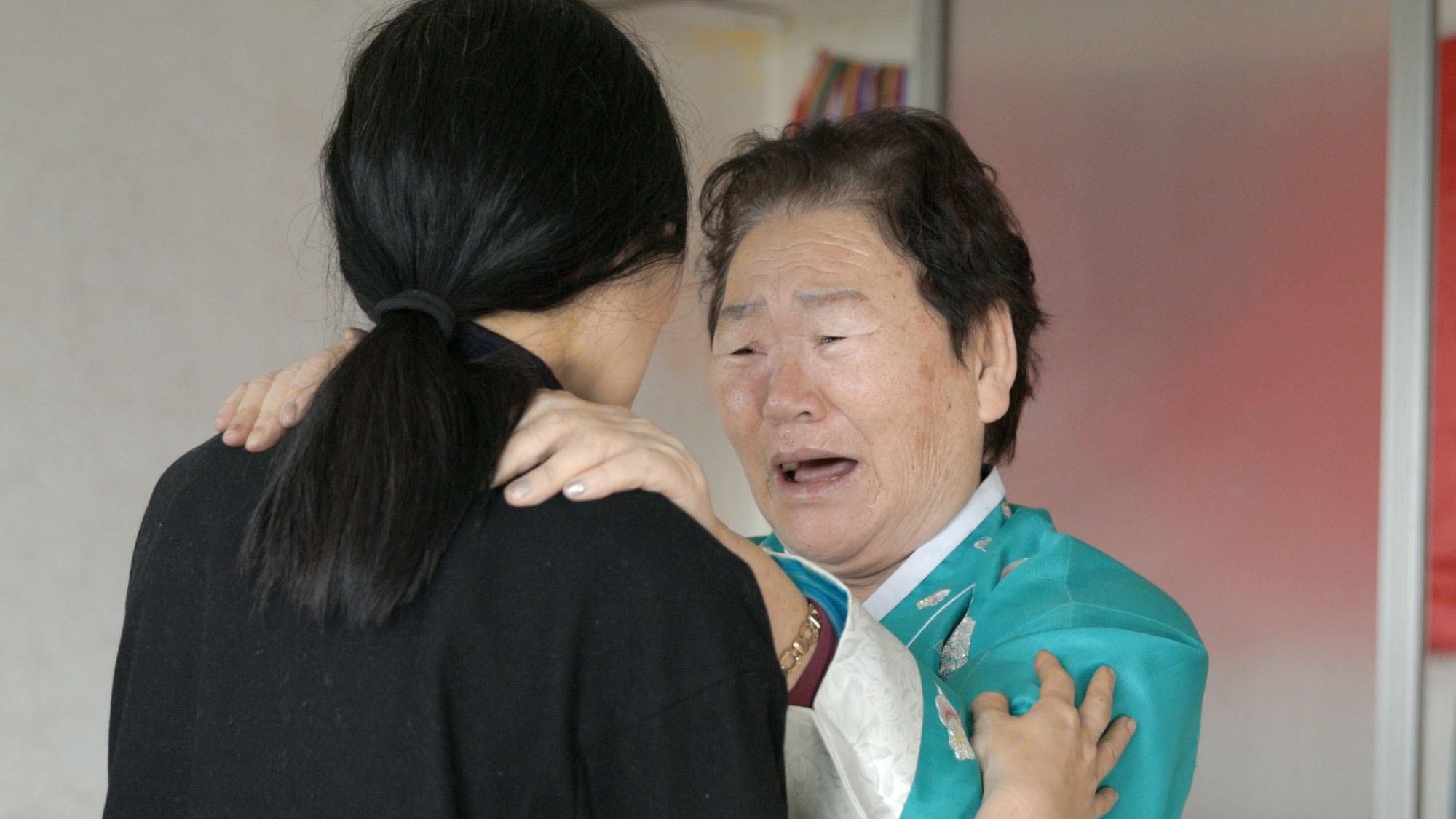 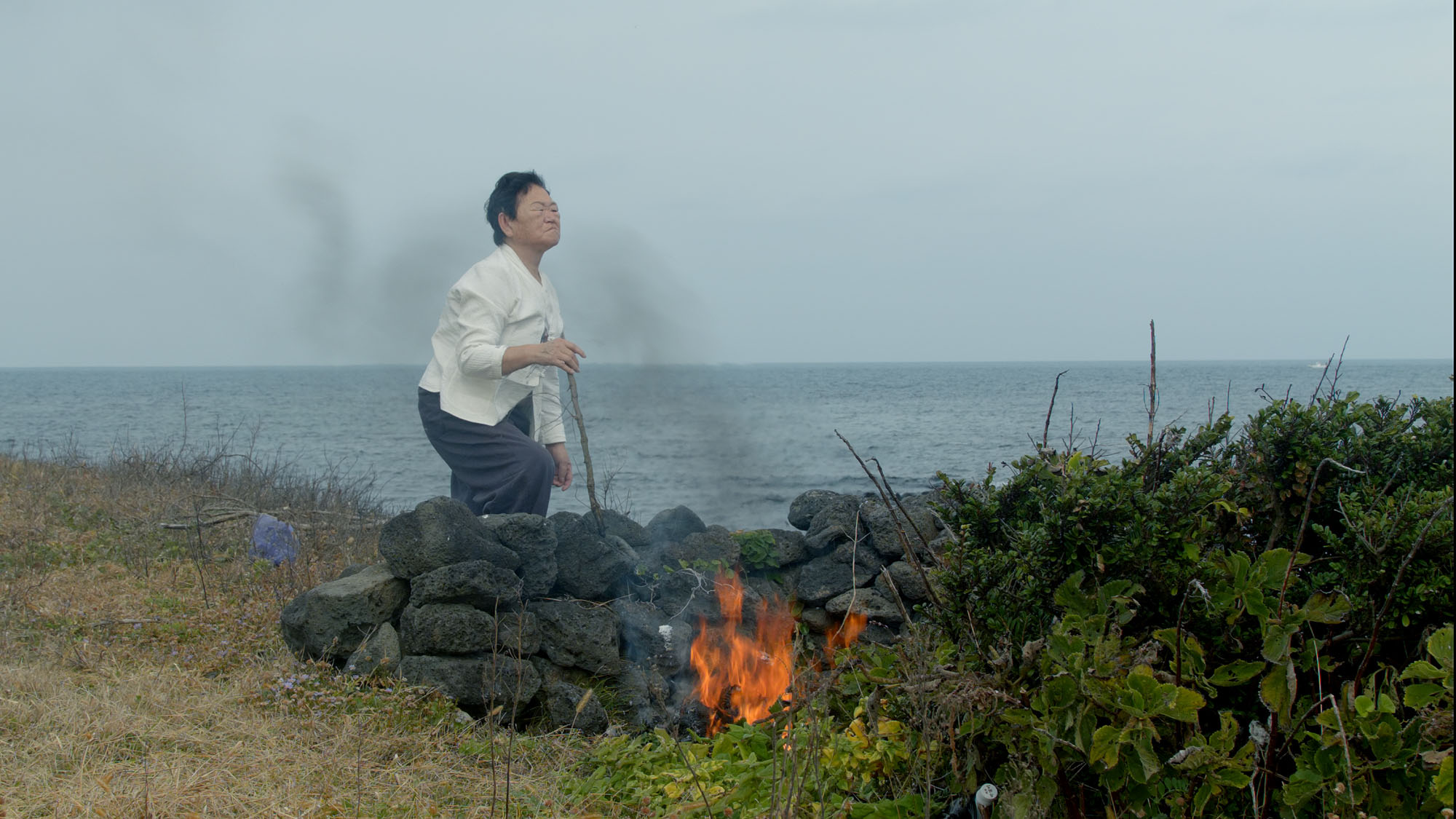 Jane Jin Kaisen, Community of Parting, 2019, stills from projected film in double-channel video installation, 1h12'22”. © Jane Jin Kaisen.
|
|
|
Jane Jin Kaisen
Jane Jin Kaisen is a visual artist born in Jeju Island, South Korea, and adopted by Danish parents in 1980. She currently lives in Berlin and Copenhagen. Working across different media—film, video installation, photography, and performance—she engages themes of memory, migration, and gender through poetic modes of storytelling and non-linear montages of image, sound, voice, and embodiment. Recent exhibitions include 2 or 3 Tigers (Haus der Kulturen der Welt, Berlin, 2017), Forum Expanded (68th Berlin International Film Festival, 2018), Decolonizing Appearance (CAMP: Center for Art on Migration Politics, Copenhagen, 2018), Asian Diva: The Muse and The Monster (Buk Seoul Museum of Art, 2017), Art Spectrum 2016 (Leeum, Samsung Museum of Art, Seoul), Interrupted Survey: Fractured Modern Mythologies (Asia Culture Center, Gwangju, 2015). She was awarded the Montana Enterprize at Kunsthallen Brandts in Denmark, and has participated in the Liverpool Biennale, the Gwangju Biennale, and the Jeju Biennale, among others. Kaisen has an MFA from UCLA (University of California, Los Angeles) and an MA from the Royal Danish Academy of Fine Arts, and participated in the Whitney Museum Independent Study Program. |
Credit
Jane Jin Kaisen, Community of Parting, 2019, double-channel video installation, dimensions variable
|
Ritual Performances and Chant
Koh Sun Ahn of Samsingdang Shrine, Jeju Island
Shamanic Rituals
Waheul shamanic ritual, 2011, Jeju Island; Munjeoncheolgari by Seo Sun-shil, 2015, Jeju Island; Bunbu-salem, 2018, Jeju Island; Singwaseje (New Year greeting ritual), 2018, Jeju Island; Hadori Jamsugut, 2018, Jeju Island
Korean Poetry
Kim Hyesoon from her book Woman, I Do Poetry, from which the translated title Community of Parting derives
English Poetry Narrators
Swedish poet Mara Lee
Narrators in Order of Appearance
Jane Jin Kaisen, Kim Seongnae, Kang Mi Soon, Eleana Kim, Chuseong Onni, Patty Ahn, Choi Kyeongjeo, Kim Meri Alexandrovna, Alexandra Tsay, Park Young Nan, Kwon Suk, Anja Sunhyun Michaelsen, Lee Geumseom, Lee Cheonghwa, Soni Kum, Kim Hyesoon, Koh Sun Ahn, Mara Lee, Nelly Sergejevna Huan Kim, Kim Suzy
Supporting Cast
Shaman apprentice Song Young Mee, Shaman Seo Sunshil of Gimnyeong village, German Shegay, Mikhail Gvak, Khegay Nikolay, Pak Il’ya, Pak Viktor, Kim Marina, Shiqi Lin, Kim Kiho
|
Concept and Editing
Jane Jin Kaisen
Co-editor
Guston Sondin-Kung
Cinematography
Guston Sondin-Kung, Jane Jin Kaisen
Assistant Cinematography
Daniel Zox
Aerial Cinematography
Daniel Zox & Guston Sondin-Kung
Sound Composition & Sound Mastering
Udo Lee
Sound Assistance
Guston Sondin-Kung
Live Sound Recording
Guston Sondin-Kung, Udo Lee, Jane Jin Kaisen
Color Grading and Title Graphics
Guston Sondin-Kung
Subtitles
Jane Jin Kaisen
Production
Incisions
Executive Production Management and Coordination
Park Eunhye
|
Coordination of Interviews / Assistant Location Management
Jeju Island, South Korea: Kim Seongnae, Ahn Hyekyoung, Shin Jeongsu; Seoul, South Korea: Lee Eunha, Park Eunhye; Kazakhstan: Alexandra Tsay; Japan: Kozue Akibayashi; China: Shiqi Lin; DMZ: Kim Haeseo, Pyo Seon Mi, Chung In-Chul; North Korea: cinematography made possible through Women Cross DMZ
Transcription of Shamanic Rituals
Kim Seoung-yon
Translation of Shamanic Rituals
Kim Seongnae
Subtitles Translation
Kim Sungeun
Korean–English Translation
Kim Haeseo, Park Eunhye, Lee Eunha, Rhee Sangmi, Pyo Seonmi, Hayeon Heather Kim, Shin Jeonsu, Han Youngsook
Russian–English Translation
Sofia Albina Novikoff Unger, Alexandra Tsay
Japanese–English Translation
Rebecca Jennison, Sin Changho, Sasaki Ryo, Ikeuchi Yasuko
Research Assistance
Koh Sun Ahn, Kim Seongnae, Kim Hyesoon, Ahn Hye Kyoung, Seo Sunshil, Eleana Kim, Kim Suzy, Patty Ahn, Lee Chong Hwa, Anja Sunhyun Michaelsen, Alexandra Tsay, Kozue Akibayashi, Yoshiko Shimada, Suzuyo Takazato, Shiqi Lin, Mun Mu-byong, German Shegay, Kim Nan, Hong Sunyoung, Oh Han Jin, Shin Jeongsu, Crystal Baik
|
Technical Support
Guston Sondin-Kung, Kim Hee-seok, Daniel Zox
Support
Arts Council Korea; Maeil Dairies Co., Ltd.; Knud Hojgaards Fond; The Danish Arts Council; Jeju Film & Culture Industry Promotion Agency
Commissioner
The Korean Pavilion at the 58th International Art Exhibition of La Biennale di Venezia (Curator Hyunjin Kim)
|